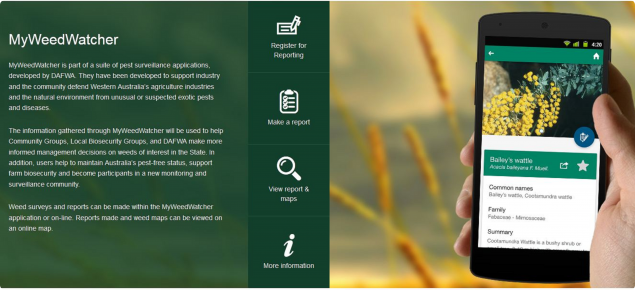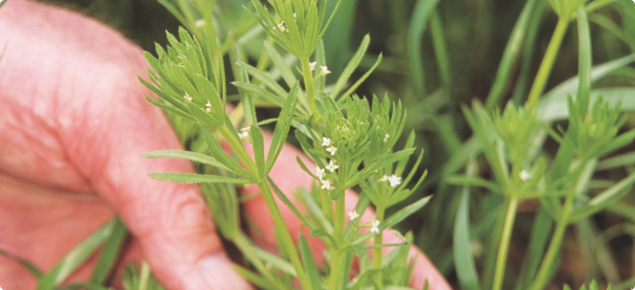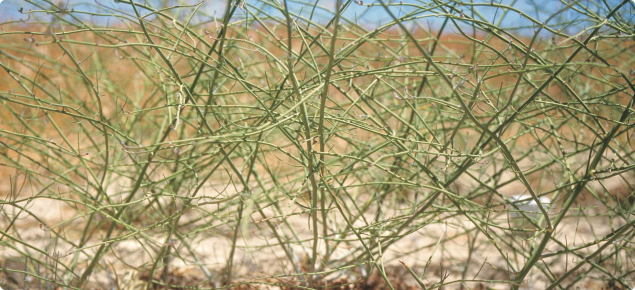This project was initially due to finish 30 June 2018. However, there is a possibility of an extension 30 June 2019 to complete the migration of MyWeedWatcher to MyPestGuide format.
Boosting Biosecurity Defences
The Boosting Biosecurity Defences (BBD) project was established in 2014 with the primary goal of increasing Western Australia’s capacity to detect and respond to incursions that could impact adversely on our export markets, and more effectively manage significant animal and/or plant pests and diseases that we have already. This project was funded by the State Government’s Royalties for Regions with the Department of Primary Industries and Regional Development (DPIRD) as the lead agency.
Agricultural weed surveillance in the South West
DPIRD commenced a three year project to involve stakeholders in targeted surveillance of agricultural weeds in the South West Land Division. This $1.16 million investment is part of the BBD project.
This project has transformed the way stakeholders and the department handle surveillance data and present information for weeds declared under the Biosecurity and Agriculture Management Act 2007 (BAM Act). Stakeholders were consulted on how they want to report declared plants and what information they need to report and manage them. Stakeholders could choose to:
- identify selected declared plants with online training
- report on declared plants with user friendly applications
- create maps and reports on selected widespread declared plants
- find selected declared plants through the development of a targeted surveillance plan.
Stakeholders improved their response to and more effectively managed high priority declared plant infestations, as a result of better information derived from targeted surveillance.
Surveillance targets
Twenty weed surveillance targets were selected for this project. The surveillance target selection process can be found in the attached document called "Declared plant selection process".
Information on the Weed Surveillance Project can be found in the full report and executive summary documents attached.
Weed surveillance plan
To help industry, biosecurity and community groups search for, find and report declared plants, a weed surveillance plan has been written. The surveillance plan can be found in the attached document "Declared plant surveillance plan for the SWLD".
As part of the surveillance plan 23 declared plant webpages have been updated to include a management calendar, economic impact, and instructions on how to search for, detect and report that declared plant (see page 10 of the surveillance plan).
Weed surveillance targets chosen
The project asked for producer and community input into choosing five weeds to include in the project. Results of the survey can be found in the document titled Declared plant selection process. The Declared plant selection process document is attached to this page in the right hand column.



